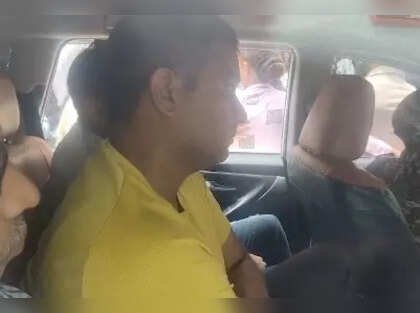Unraveling the Chhattisgarh Liquor Scam: An Inside Look at the ED Chargesheet
In the heart of India, the Chhattisgarh liquor scam has emerged as a murky tale of corruption, power, and deception that has captivated both political analysts and the general public alike. The ongoing investigation led by the Enforcement Directorate has turned the spotlight on an alleged conspiracy involving several high-profile individuals, including politicians and business associates connected to the state’s liquor policy. As the details unfold, the ED chargesheet presents a chilling narrative that raises serious questions about governance and accountability.
The roots of the Chhattisgarh liquor scam can be traced back to a series of policy changes implemented by the state government aimed at liberalizing the liquor trade. These reforms were supposed to enhance revenue and create a more regulated environment for alcohol sales. However, what appeared to be a benign initiative soon spiraled into a complex web of illicit transactions and favoritism. A closer examination of the chargesheet reveals that the issues are not merely financial discrepancies but systemic failures that allowed a culture of corruption to thrive.
At the center of this scandal is a network of influential players who allegedly manipulated the liquor licensing process for profit. The ED chargesheet outlines a series of transactions that indicate a coordinated effort to siphon off public funds. Bribes were reportedly exchanged for licenses, and dubious contracts were awarded to favored vendors, resulting in significant losses to the state exchequer. The figures cited in the chargesheet are staggering, with estimates of millions of rupees unaccounted for, prompting a series of investigations that have reverberated through the political landscape of Chhattisgarh.
As the investigation progresses, it has become clear that the ramifications of the Chhattisgarh liquor scam extend far beyond financial misconduct. Political ramifications are palpable, as key figures within the ruling party find themselves under scrutiny. Allegations of collusion have surfaced, indicating that certain politicians were complicit in the scheme, trading their influence for personal gain. This has led to a growing rift within the party, as factions vie for control and attempt to distance themselves from the fallout of the scandal.
In addition to its political implications, the Chhattisgarh liquor scam raises pressing questions about regulatory oversight. The chargesheet illuminates a concerning lack of checks and balances that allowed such a widespread abuse of power to go unchecked for an extended period. Critics argue that the very framework meant to regulate the liquor industry was subverted, resulting in a system that prioritized profit over public welfare. Calls for reform have intensified, as citizens demand accountability from their leaders and a commitment to transparency in governance.

Public reaction to the unfolding saga has been a mixture of outrage and disbelief. Social media platforms have lit up with discussions surrounding the scandal, with hashtags related to the Chhattisgarh liquor scam trending nationally. The average citizen, who feels the impact of such corruption through inflated prices and reduced public services, has voiced their discontent. Many have taken to the streets in protest, demanding justice and a thorough investigation that holds those responsible accountable.
In the midst of the chaos, the role of the Enforcement Directorate has come under scrutiny as well. The agency, tasked with investigating economic crimes, has faced criticism over the speed and depth of its inquiries. Some observers question whether the agency can operate independently in a politically charged environment where the stakes are high. As the ED continues to sift through mountains of evidence, the pressure mounts to deliver a thorough and comprehensive chargesheet that not only names those involved but also outlines the mechanisms that facilitated such widespread corruption.
As the narrative surrounding the Chhattisgarh liquor scam evolves, the stakes continue to rise. The ED’s ongoing investigation serves as a crucial litmus test for the integrity of India’s anti-corruption framework. If the chargesheet can convincingly outline the connections between politicians and business interests while illuminating the systemic flaws that allowed corruption to flourish, it could ignite a larger movement for reform across the nation.
In conclusion, the Chhattisgarh liquor scam and the ED chargesheet represent more than just a scandal; they embody a growing demand for accountability in governance. The unfolding story is a testament to the resilience of civil society as citizens demand transparency and justice. As investigators delve deeper into the murky waters of corruption, the hope remains that this scandal will not only lead to the prosecution of wrongdoers but also spark a broader movement toward reform that makes future abuses of power less likely. The outcome of this investigation will likely define Chhattisgarh’s political landscape for years to come, serving as a cautionary tale for those who believe they can sidestep the rules without consequence.












Leave a comment